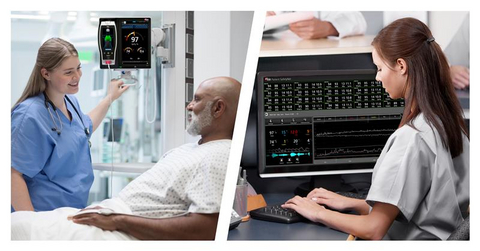Masimo has announced the results of a study demonstrating that continuous patient monitoring with its technologies not only improves patient outcomes but also saves hospitals significant sums of money.
The research, published in the Journal of Patient Safety and conducted by Dr George Blike and colleagues at Dartmouth-Hitchcock Medical Center in New Hampshire, examined three and a half years of patient data. The analysis covered nearly 32,000 general floor patients and assessed the financial implications of Masimo’s surveillance monitoring system.
The findings suggest that hospitals adopting continuous monitoring see substantial operational benefits. Each rescue event avoided was linked to a positive operating margin impact of about $5,500 per patient, while each avoided transfer to higher-acuity care saved approximately $10,700. For Dartmouth-Hitchcock, a 10% reduction in such events translated into estimated annual savings of $350,000 from rescues and $409,000 from transfers, across 200 beds equipped with the system.
The study builds on earlier research highlighting the clinical benefits of Masimo’s SET® pulse oximetry and Patient SafetyNet™, which include lower mortality rates, improved resuscitation outcomes, and reduced emergency escalations. According to the team, these advantages are achieved through earlier detection of patient deterioration, enabling timely interventions.
Masimo’s Chief Medical Officer, Dr Daniel Cantillon, said the findings counter a common perception that cost hinders the adoption of continuous monitoring. “This study clearly demonstrates that continuously monitoring all patients costs hospital systems less – not more – while solidly debunking the myth that cost remains a barrier,” he said.
The Dartmouth-Hitchcock team previously reported reductions of up to 65% in rapid response team activations and 48% in transfers back to intensive care following the introduction of Masimo’s system. In subsequent years, they observed a 50% reduction in unplanned transfers and a 60% reduction in rescue events, with no preventable deaths linked to opioid-induced respiratory depression.
Similar benefits have also been documented outside the United States. A 2022 study in a 1,200-bed hospital in Saudi Arabia confirmed reduced mortality and improved outcomes after implementing Masimo’s monitoring technologies.
Healthcare providers often hesitate to invest in continuous monitoring due to upfront costs, but the Dartmouth-Hitchcock researchers argue that the long-term savings and improved outcomes outweigh initial expenses. They described their financial model as “generalizable and easy to replicate,” offering a potential roadmap for other hospitals and even outpatient centres considering similar systems.
The authors concluded that continuous patient surveillance is “operationally cost effective” and improves both margins and patient safety. Beyond the financial impact, the study underlined the human benefits, noting that hundreds of patients each year at Dartmouth-Hitchcock alone avoid prolonged intensive care stays and associated harm thanks to early interventions.

